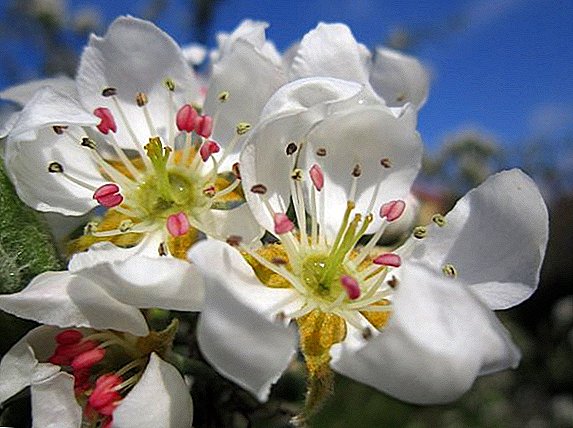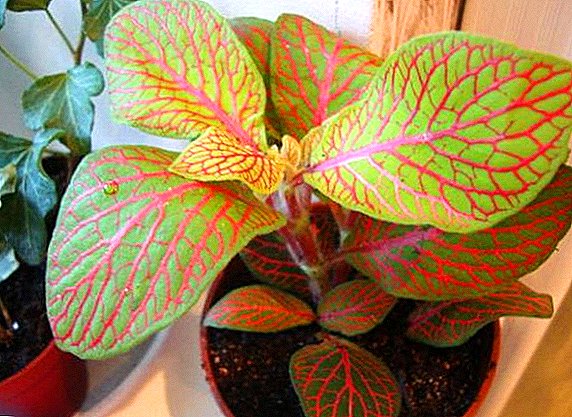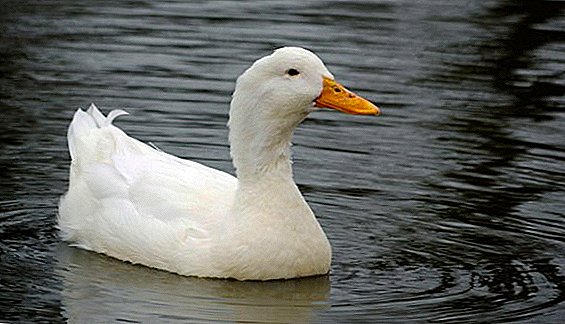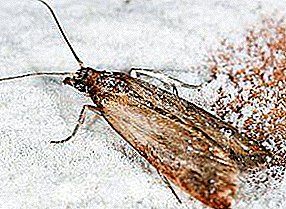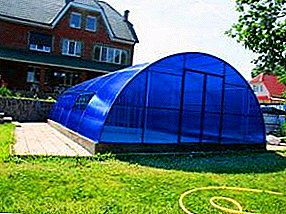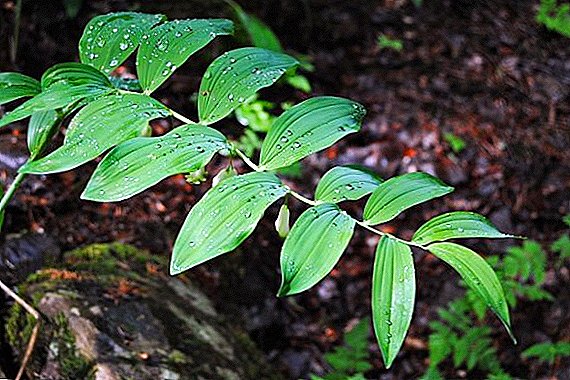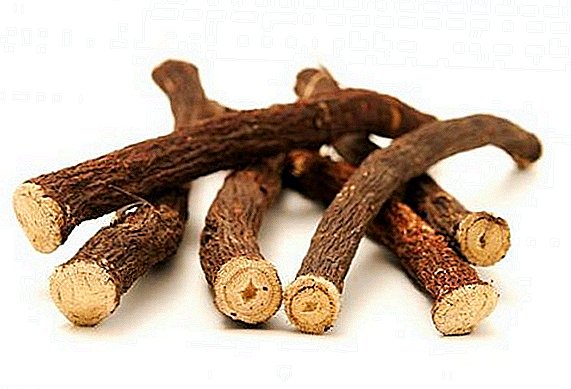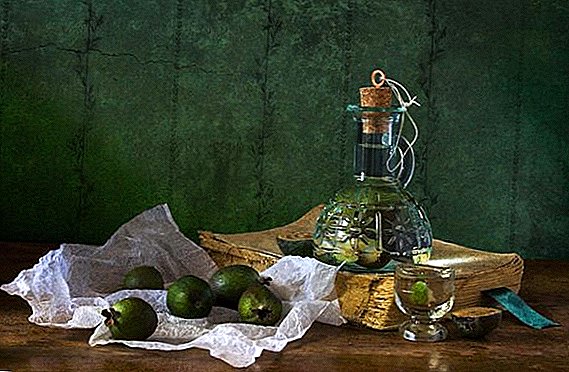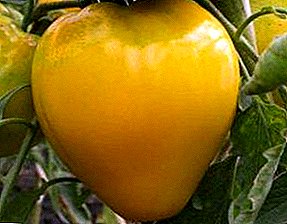
There are many varieties of tomatoes, all have certain qualities, advantages and disadvantages.
Today we will talk about the variety, almost devoid of flaws. This is the tomato King of Siberia, about him and talking.
Tomato King of Siberia: variety description
| Grade name | King of Siberia |
| general description | Mid-season indeterminantny grade |
| Originator | Russia |
| Ripening | 111-115 days |
| The form | Fruits are round-heart-shaped. |
| Colour | Orange |
| Average tomato mass | 400-700 grams |
| Application | Fresh |
| Yield varieties | 12-15 kg per square meter |
| Features of growing | Agrotechnika standard |
| Disease resistance | Resistant to major diseases |
 Tomato varieties King of Siberia, suitable for cultivation, as in the open ground, and in greenhouses.
Tomato varieties King of Siberia, suitable for cultivation, as in the open ground, and in greenhouses.
This variety was developed by Russian scientists specifically for growing in greenhouses under harsh environmental conditions.
The plant bears fruit well in cold climates, but in warmer latitudes it is able to produce good yields in open ground.
The plant is quite high 150-180 centimeters.
Tomatoes King of Siberia is a mid-season variety, it is classified as indeterminate, standard types of plants.
Of the features of this species, it is worth noting its resistance to the most typical diseases and pests for tomatoes.
Specifications
This tomato has a truly royal external data. Fruits are orange, heart-shaped, slightly flattened. The fruits are very fleshy, large from 400-700 grams, there are also real giants whose weight reaches 1000 grams. The fruit has 7-9 chambers and contains little water. The amount of dry matter 3-5%.
You can compare the weight of tomatoes of this variety with others in the table below:
| Grade name | Fruit weight (grams) |
| King of Siberia | 400-700 |
| Russian size | 650-2000 |
| Andromeda | 70-300 |
| Grandma's Gift | 180-220 |
| Gulliver | 200-800 |
| American ribbed | 300-600 |
| Nastya | 150-200 |
| Yusupovskiy | 500-600 |
| Dubrava | 60-105 |
| Grapefruit | 600-1000 |
| Golden anniversary | 150-200 |
This type of tomato was bred in Russia by our Siberian scientists. Received as an independent variety received in 2014.
As the name suggests, this type of crop is intended for cultivation in greenhouse conditions in the regions of Western and Eastern Siberia, the Urals and the Far East. But in the open ground can be grown in the central and southern regions of Russia.
The fruits of the King of Siberia variety are very good for fresh consumption. For conservation is not suitable because of the large size. It is also problematic to get juice from them, because they contain little moisture.
Tomatoes King of Siberia have a very high yield. With proper care from one bush can collect up to 5 pounds, and from the square. meters to 12-15 pounds.
Compare the yield of the King of Siberia with other varieties can be in the table below:
| Grade name | Yield |
| King of Siberia | 12-15 kg per square meter |
| Andromeda Pink | 6-9 kg per square meter |
| De barao giant | 20-22 kg from a bush |
| Polbyg | 4 kg per square meter |
| Sweet bunch | 2.5-3.2 kg per square meter |
| Red bunch | 10 kg from a bush |
| Summer resident | 4 kg from a bush |
| Fat jack | 5-6 kg from a bush |
| Pink Lady | 25 kg per square meter |
| Countryman | 18 kg from a bush |
| Batyana | 6 kg from a bush |
| Golden anniversary | 15-20 kg per square meter |
A photo
See below: Tomatoes King of Siberia photo





Advantages and disadvantages
The indisputable advantages of the variety King of Siberia include:
- high yield;
- unpretentiousness to the soil;
- resistance to diseases and pests;
- the possibility of growing in different climatic zones;
- great taste.
disadvantages:
- narrow scope of use, only fresh;
- Bushes in the care require a special skill, as it requires a special backup for the branches;
- need abundant and regular watering.
 Read also interesting articles about planting tomatoes in the garden: how to properly tying and mulching?
Read also interesting articles about planting tomatoes in the garden: how to properly tying and mulching?How to build a mini-greenhouse for seedlings and use growth promoters?
Features grade
Among the characteristics of the variety should be noted the size of the fruit, and the resistance of this species to most species of pests and diseases.
Another feature is that this type of tomato is ideal for dietary nutrition, and the high content of vitamins makes this variety indispensable in the recovery period after illness.
Diseases and pests
 The king of Siberia is most often exposed to the invasion of spider mites and the greenhouse whitefly.
The king of Siberia is most often exposed to the invasion of spider mites and the greenhouse whitefly.
When the plants are affected by the greenhouse whitefly, they are sprayed with the “Confidor” preparation, at the rate of 1 ml per 10 l of water, the resulting solution will be enough for 100 sq.m.
From spider mites most often get rid of using a soap solution, which wipe the leaves and the affected areas of the plant to completely eliminate the pest.
Of the diseases to which this variety is susceptible, it is worth highlighting brown spotting. It most often affects tomatoes in greenhouses.
For the prevention of this disease, it is necessary to observe the light regime and the moisture regime, since the increased humidity contributes to the appearance of this disease. To combat it, use the Barrier and Barrier, from folk remedies, use garlic solution.
All the advantages and a few shortcomings have established how to deal with possible pests too, it remains to wish good luck in growing the King of Siberia!
We also bring to your attention articles on tomato varieties with different ripening terms:
| Medium early | Middle late | Mid-season |
| New Transnistria | Abakansky pink | Hospitable |
| Pullet | French grapevine | Red pear |
| Sugar giant | Yellow banana | Chernomor |
| Torbay | Titanium | Benito F1 |
| Tretyakovsky | Slot f1 | Paul Robson |
| Black Crimea | Volgogradsky 5 95 | Raspberry elephant |
| Chio Chio San | Krasnobay f1 | Mashenka |


